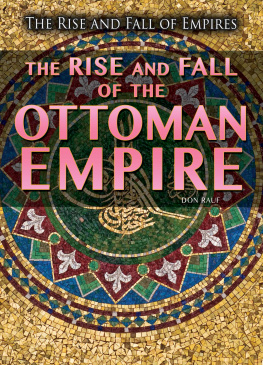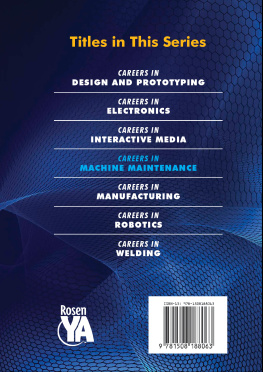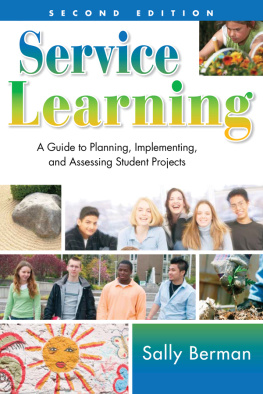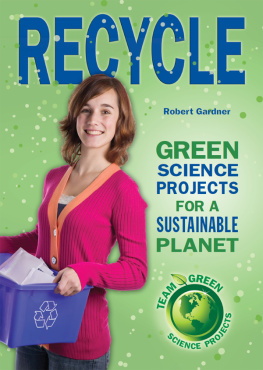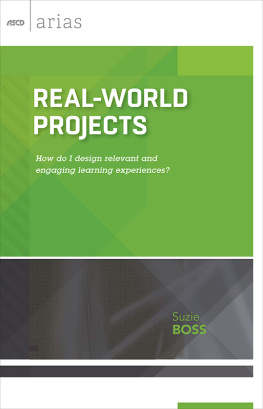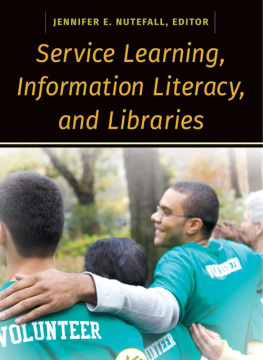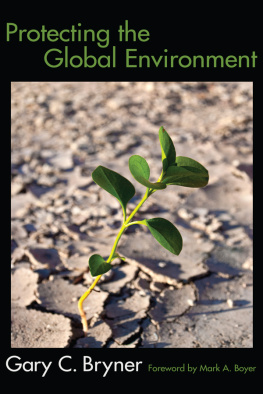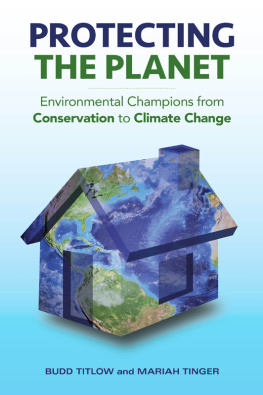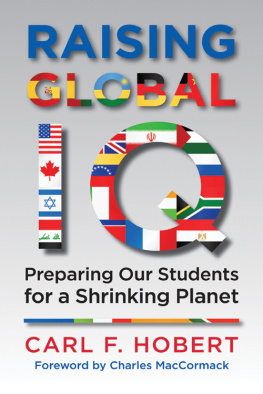Page List
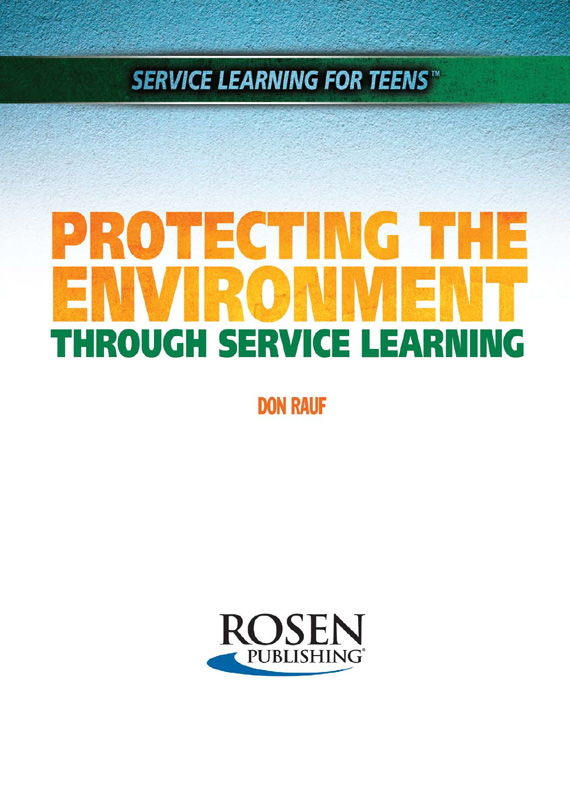
Published in 2015 by The Rosen Publishing Group, Inc.
29 East 21st Street, New York, NY 10010
Copyright 2015 by The Rosen Publishing Group, Inc.
First Edition
All rights reserved. No part of this book may be reproduced in any form without permission in writing from the publisher, except by a reviewer.
Library of Congress Cataloging-in-Publication Data
Rauf, Don.
Protecting the environment through service learning/Don Rauf.
pages cm.(Service learning for teens)
Includes bibliographical references and index. ISBN 978-1-4777-7961-3 (library bound)
1. Service learningJuvenile literature. 2. Environmental protectionJuvenile literature. I. Title.
LC220.5.R38 2015 361.37dc23
2014018166
Manufactured in the United States of America
CONTENTS
S ervice learning is a type of education that is spreading across the country. Students in many high schools today are required to participate in servicelearning projects in order to graduate. While it combines classroom instruction with community service, the emphasis of service learning is on the activities that students perform outside of the classroom to improve their community, school, and/or world. Through service learning, students nationwide may provide assistance at homeless shelters, build low-cost housing, tutor underprivileged children, and help with projects that improve the environment.
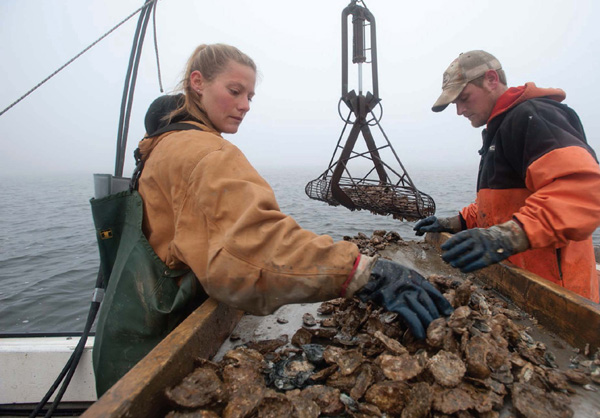
More students are participating in programs that help the environment and teach them about science and other subjects. Students in Maryland for example, have been active in a project called Bringing Back the Eastern Oyster.
According to the Corporation for National Service in a research project focused on environmental service learning, many young adults identify the environment as a main focus of concern.
In some environmentally oriented programs, young adults have donated their time, energy, and muscles to plant trees and bushes in local parks. They have cleaned up streams, rivers, and beaches where people have littered. They have organized campaigns to gather signatures in support of environmental efforts, such as banning plastic shopping bags, which are not biodegradable. Many of these students are passionate about this work and the learning experiences it provides because they realize that the Earths resources are limited and are often threatened by pollution and other factors. They want to do what they can to contribute to a cleaner world where nature and living creatures can thrive.
Students who participate in service learning as part of a school requirement are typically asked to reflect on their community experience and think about how their service experience connects to their academics. Often, by writing out this reflection, they realize how their studies can be applied in a real-world setting.
Every student who attends a public school in Maryland participates in service learning as a part of their regular curriculum, and over 60 percent of these projects relate to the environment. Students from elementary, middle, and high schools in Calvert County participated in a project called Bringing Back the Eastern Oyster.
Oysters were once plentiful in the Chesapeake Bay, an estuary surrounded by Maryland and Virginia. In the late 1800s, more than fifteen million bushels of oysters were harvested from the waters of the Bay, but in current times, this number has dropped to under seventy-five thousand bushels. Overharvesting and declining water quality have led to the rapid disappearance of oysters. The oyster population in the Bay is said to currently be less than 1 percent of what it once was.
Through their participation in the Bringing Back the Eastern Oyster project, students helped scientists to create a new oyster habitat by releasing healthy oyster larvae onto designated oyster bars in the Patuxent River. Their experience with the ecology and restoration of the Chesapeake Bays oyster reef connected to their science curriculum. Many of the participating students then went back to their schools and homes and taught friends and family about the importance of a healthy Chesapeake Bay. Some students also joined advocacy activities, making posters and writing letters to inform the community of this project.
Through hands-on activities with oysters, these students learned about the influence of water qual-ity on the growth and survival of aquatic organisms, such as oysters. Students discovered the impact that disease and human activities can have on the natural world, and they also learned that damage to the environment can be reversed. These young adults made a difference in improving the environment while gaining firsthand experiences with scientific research.
Service learning can be a great motivator for many students. Not only does it provide the satisfaction of making the world a better place, but it also makes learning more fun and shows how learning in the classroom can be applied in the real world. These programs also give young people a sense of civic responsibility by asking students to look outside of themselves and help the common good.
This book will help students who are interested in this engaging way of learning to find out their options, to get involved, and to make the most of the servicelearning experience.
A t the Milford Alternative Program in Connecticut, twenty-two high school students volunteered at the Milford Coastal Audubon, an organization dedicated to conserving Connecticuts environment through science-based education. The organization focuses on the states bird populations and their habitats.
These students participated in Youth: Ethics in Service (YES), a service-learning experience led by their science teacher to help survey, plot, remove, and replace invasive plant species at the Audubons nature sanctuary. As the students improved the grounds, they also learned about invasive species and their effects on the Connecticut coastline.
These students also worked in teams to restore more than five acres of Wilcox Park in Milford. They cleaned and rebuilt areas that had been damaged by bikers and hikers who had strayed from the existing trails.
Working with the City of Milford Tree Commission, these young people also planted trees at Walnut Beach, located on the Connecticut coastline. The students put in three days of hard labor. They dug holes and planted sourwood and serviceberry trees. These projects helped the city, the environment, and the students, who earned required volunteer service hours.
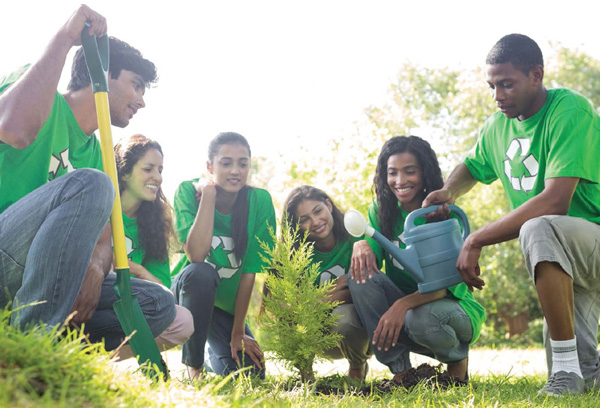
Students involved in service learning are not afraid to get their hands dirty. Many work hard planting trees, cleaning parks, and mending trails. Students earn volunteer service hours while making the world a better place.
One student said: This project is great because it really lets us learn. Usually I am really bored in class, but I have learned more in this one semester than I ever learned in my regular science classes.
LEARNING, LABORING, AND LOVING IT


